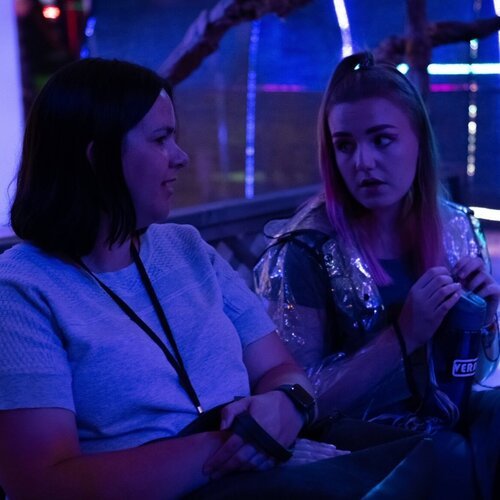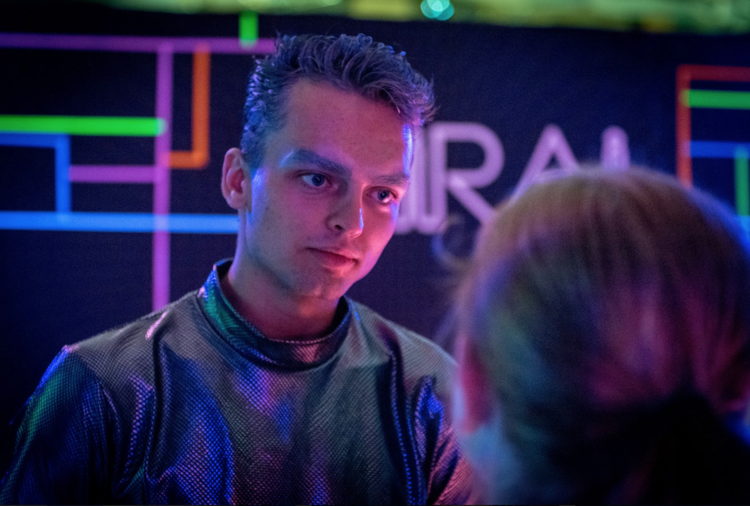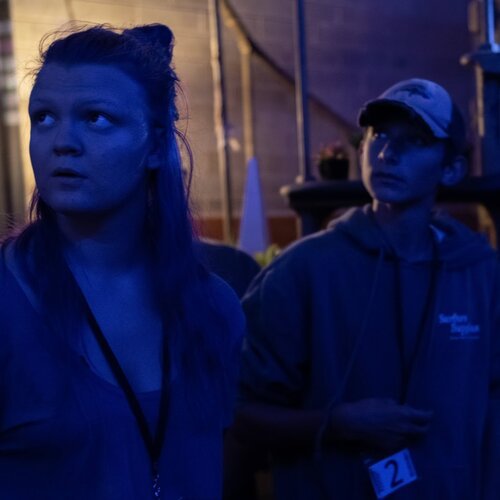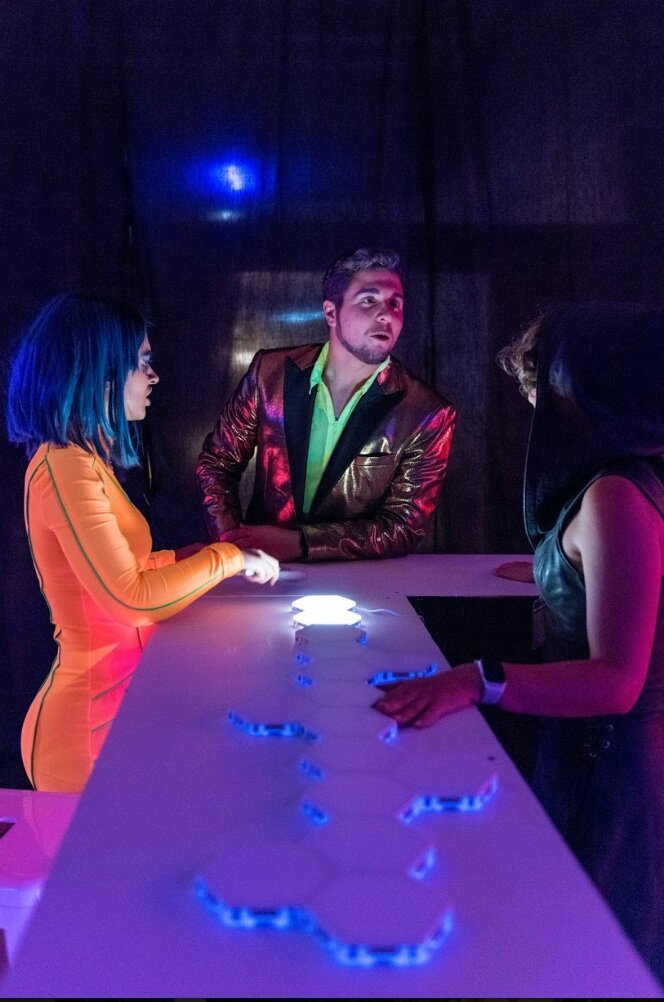The Virtue of Reality
I have been performing in immersive productions for over a decade, but this was the first time I performed, directed, and worked simultaneously as an experience designer… with undergrad students.
With only one day between auditions for CU Boulder’s entire fall season lineup (eight shows, I believe) and the first rehearsal, our cast showed up eager, uncertain of what to expect, and willing to work.
Together, we developed performances around the plot and script that had already been written, with each student eagerly adding to their outlines and contributing their creative energies to crafting an open-world experience. It was tough; the students had never learned about immersive performance, so I taught them interactive strategies and helped ease their tension around audience engagement and going off-script. We set up rehearsals for each character to interact with different types of audience groups. We established missions and hooks within the world to strengthen the audience’s engagement, and I taught the students how to perform while managing an interactive space without breaking character. Over only four weeks of rehearsals, our undergraduate cast evolved from uncertain about immersive performance to skillful performers whose interactions intrigued audiences and fluidly enabled narratives to unfold. They were fantastic.
The show was a hit with our audiences; people lined up out the space, waiting to share in our experience. Some audience members were deeply moved when they were unable to free Belladonna, while others successfully stole parts to help further life-saving research. The world designed by CU Boulder’s XD department was completely brought to life by the undergraduate cast members who worked so hard to make this experience a success.
Along the way, we worked through the process of considering ethical questions and re-centering the designers’ work around the lived realities of the humans who would help bring the world to life.
For example:
The MFA cohort designed this production to occur in ongoing 6-hour performances, and the lead designer insisted that the actors shouldn’t need breaks. So we compromised, creating a rotation that provided actors with one 10-minute break every 90 minutes while still ensuring that each area of the world had enough actors present to carry that area’s narrative forward.
We created consent mechanics to protect our undergraduate actors from unwanted contact with audience members who may be eager to view the actors as props within the world. Drawing from my own experience performing in Renaissance Festivals and as a Mascot, we created a three-part system that allowed actors to communicate with one another to get support if they ever needed, and we worked to craft narrative, diegetic tools to redirect audience members in support of actors’ boundaries.
We found ways to design water vessels so that actors—who were often performing high-energy dances, drumming and singing, or speaking over loud music, unmic’d, and always while entirely separate narratives were occurring elsewhere but within the same room—could have water on hand for their own health.
Even the characters who were “bionic”—whose original body parts had been replaced or “upgraded” with technologically infused or fully mechanized alternatives.
We cast swing understudies who were simply present throughout the performance, but who knew the entire narrative, so that if an actor suddenly needed to leave the performance space for any reason, the swing could step in. If an audience member interacted with a character when performed by one actor, and then the swing stepped in, and the audience member questioned? Not a problem. Bionic upgrades are a well-established part of the world, as are memory wipes. So we had a way to dietetically excuse circumstances in which a character no longer remembered a conversation that same character had with audience members previously if the audience members returned to find the character now played by a swing.
We made many other adjustments—a necessary part of the experimentation process of crafting such a large-scale production, especially when that large-scale production is the first-ever immersive performance produced by a university.















